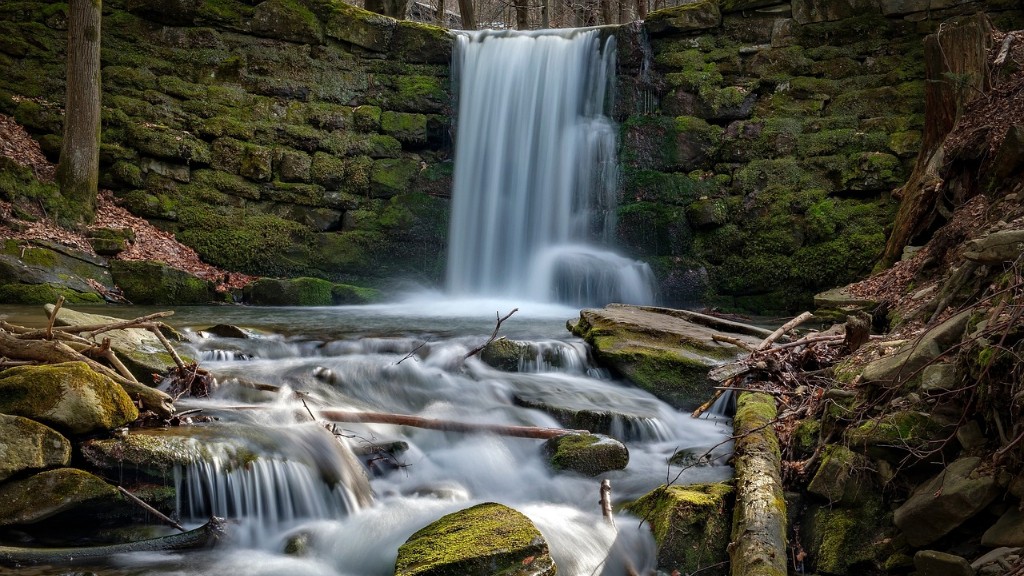The Mississippi River carries life to many communities along its vast coastline. The economy of the United States relies heavily on the water flowing through the greater upper Mississippi Basin. The devastation of floods and the potential long-term consequences of unsustainable water usage have been addressed with the construction of many different dams along the river. While the dams can have great positive implications towards the water cycle of the river, they can also have negative impacts.
The primary purpose of the dams are to reduce the amount of flooding that affects downstream cities located along the Mississippi. Without the structures, cities in vulnerable areas would be greatly impacted as water torrents down the river, washing away infrastructure and wreaking havoc on any planned cities close to the river. Dams are also necessary to regulate the amount of water released from the river, helping to provide a reliable supply of water for downstream towns.
But the dams can also have their drawbacks. Water held back by dams can slowly erode nearby land, making the riverbanks more vulnerable to floods. Due to regulation, water can also cause sediment build-up in the riverbed. Low river flows due to dams can also disrupt certain aquatic species’ ecosystems, particularly the types of fish such invertebrates and other wildlife that need cool streams and rivers in order to survive. The dams can also have an adverse effect on riverine systems as water can change its course and begin to flow away from its natural course, disrupting the downstream flora and fauna.
Fortunately, the US Army Corps of Engineers and other government agencies have taken steps to mitigate the impacts of the structures. Environmental assessments and compensatory mitigation measures have been imposed to reduce potential damage to the surrounding land. In addition, the reservoir water quality is frequently said to improve, preventing water-borne illnesses and hazardous materials from entering the water system. Although it has been shown that the presence of dams has led to changes in the land around the Mississippi, it has, for the most part, been for the better.
The effects of the dams on the Mississippi River are not only environmental, but also economical. In addition to reducing the risk of flooding and subsequent damage to cities, dams are a resource for energy production. Dams are used to generate hydroelectricity, a clean source of energy, to power homes and businesses in local communities. The electricity created by the dam is not only beneficial to local communities, but can be used to supply the surrounding area with electricity at a lower cost and with less pollution than other sources of energy.
The dams on the Mississippi River are vital structures and have been intended to protect local communities, prevent downstream flooding, supply nearby cities with electricity, and improve water quality. While the dams are not without their downsides, the overall effect of the structures have been beneficial to many residents, communities, and their surrounding land.
Agricultural potential
The dams on the Mississippi River are also taking a large toll on the local agricultural sector. Due to the reservoirs of water, hundreds of acres of land have become prime agricultural territory, with high yields of both produce and livestock. By providing a secure source of water for local farmers, these dams are able to greatly enhance their productivity and in turn, provide cheap and abundant food for the community.
The stationary water is also home to migratory species of fish, birds and other wildlife, which contribute to the local ecosystems around the Mississippi. The influx of wildlife can help to diversify and sustain biodiversity in the area, which can help to provide benefits to the surrounding environment and help local economies as these species attract tourists.
In addition, access to the water provided by the dams can have great effects on current infrastructure, including transportation. Improved transportation across the river is a critical infrastructure need in the US, especially when taking into account the long distances that can be spanned in water bodies. This improvement can help to open up trade opportunities, allowing companies to move goods more quickly and cheaply. This can help to reduce the financial cost of imports and exports, allowing goods to become more readily available in the US and abroad.
Fisheries can also be greatly enhanced by the presence of dams. The formation of deeper and more stable water habitats due to the dams creates a great opportunity for freshwater sport fishing. This sport is especially enjoyed in the Midwest, home to the Mississippi River, where deep reservoirs become popular fishing grounds. This recreational activity can also bring in a considerable amount of local revenue as well.
Commercial Boating
In addition to the recreational opportunities, many commercial attempts have been made upon the mighty Mississippi. With a multitude of ports and well-maintained rivers along its course, many vessels have used the river for economic purposes. Dams are able to regulate the river level, providing a smooth and safe journey for most boaters.
This allows saltwater marine life to reach far inland which was originally impossible before the dams were present. This influx of new species has also made people inbreed to make new species more desirable as well as making further development more difficult/costly. This can also effect the diversity of species in the upper Mississippi as well, depending on how different species adapt to the environment.
Due to the movement of the water, dams create new paths for navigation. While this helps the commercial market, this can also increase the distance that private watercraft have to travel to get around the dams. This can have an adverse effect on small businesses and consumers who rely on the waters of the Mississippi to travel around.
The dams also bring down the velocity of the river, allowing larger vessels to make their way through. Some businesses, relying on large vessels to transport goods up and down the river, have come to heavily rely on the dams to make their operations that much more efficient. In addition, these businesses can count on reliable and consistent water flow to ensure their goods reach their destination in a timely manner.
Dams can also lengthen the lifespan of commercial vessels, as the water level and flow never fluctuate too drastically, unlike the rest of the river. This has helped to keep the number of vessels being used commercially at a steady rate, helping to boost the local economy.
Environmental Effects
The environmental effects of the dams range from good to bad, depending on the dam and its purpose. Water retention in the dams can cause sediment buildup in the waterways, causing a disruption in the native wildlife’s habitat. The wildlife can be drastically changed by the new conditions, leading to changes in the ecosystem of the river.
Nutrients in the water can also be reduced as they are unable to travel past the dams, leading to further disruption of the natural environment. This imbalance can cause long-term damage to the local ecosystem and even lead to the displacement of certain species due to the lack of food sources or natural habitats.
The dams are also used in many areas for irrigation purposes, leading to the depletion of water sources. This can cause the local species to suffer from too much or too little water depending on the area and the level of water control. While the dams can help to prevent flooding and equally distribute water resources, they can also cause adverse effects on the downstream area.
The dams also make it harder for fish and other aquatic life to migrate upstream, as the water suddenly becomes shallow and still. Fish ladders and other specific engineering projects are needed in order to help aid in the migration of the important species.
It is important to note that while dams can have a negative impact on natural habitats and water systems, the larger picture remains relatively positive. The dams are able to control the water flow and act as a barrier to protect the land from serious flooding and potential long-term damage.
Conclusion
The dams on the Mississippi River are essential structures, with great potential for both positive and negative impacts. Major advancements with mitigating the potential risks of the dams have been made, allowing them to serve their purpose while also providing recreational opportunities, transportation systems, and power sources. They must continue to be monitored and managed to ensure healthy communities and surrounding land to the area are sustained in the face of overpopulation and climate change.





